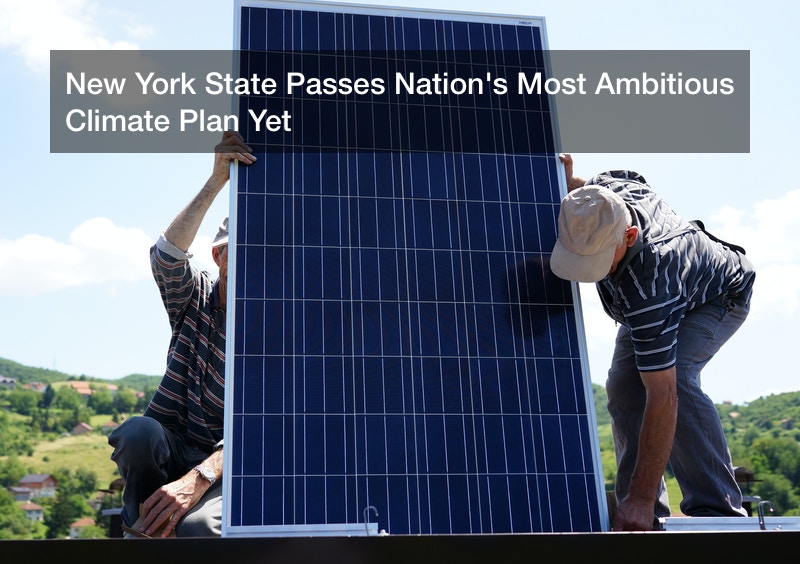
 The adverse effects of climate change continue to make headlines and divide the nation, but New York State lawmakers have chosen to take a stance in favor of change. Last month, the state Senate passed the Climate Leadership and Community Protection Act, which includes the most ambitious plans the nation has ever seen in regards to the elimination of greenhouse gases and other environmental measures. And now that it’s been signed by Governor Andrew Cuomo, the fourth most populous state is poised to lead the charge in taking responsibility for planetary protection.
The adverse effects of climate change continue to make headlines and divide the nation, but New York State lawmakers have chosen to take a stance in favor of change. Last month, the state Senate passed the Climate Leadership and Community Protection Act, which includes the most ambitious plans the nation has ever seen in regards to the elimination of greenhouse gases and other environmental measures. And now that it’s been signed by Governor Andrew Cuomo, the fourth most populous state is poised to lead the charge in taking responsibility for planetary protection.
Under the agreement, the state would be required to reduce climate change-causing pollution to 85% below the levels sen in 1990 by 2050, essentially eliminating all greenhouse gas emissions by that time. The remaining 15% of those emissions would need to be offset through a variety of measures (potentially by removing atmospheric carbon dioxide). While nearly 87% of America’s households have air conditioning and rely on electricity to generate all kinds of modern conveniences, the plan envisions a future wherein all of New York’s electricity would originate from carbon-free sources, oil-burning heating systems would be eradicated, and gas-powered vehicles would be phased out.
Although laws have already been passed elsewhere (mostly in Democratic-led states) to reduce greenhouse gas emissions, the New York State bill is certainly the most daunting. If New York achieves these goals, the state would essentially have a net-zero economy. But while this would solidify New York’s position as a global leader, the challenges are substantial. Thus far, the state has reduced its carbon emissions by only 8% between 1990 and 2015. Whether or not New York can actually make good on these intentions has been called into question. Not only will the adaptations for businesses, real estate markets, and energy providers come at a substantial cost, but those costs will certainly be passed onto consumers. Although the global solar market grew by 29.3% during 2017, not everyone had embraced solar power as a renewable energy source. For many New Yorkers, electricity bills will continue to climb as a result of the changes required under the law. What’s more, the state would be required to install 34,340 megawatts of solar power capacity to replace the electricity currently generated by other means.
The amount of solar power installed in the U.S. has increased more than 23 times over the past eight years — from 1.2 gigawatts (GW) in 2008 to an estimated 27.4 GW at the end of 2015.
That said, environmental advocates are completely in favor of the bill, though some point out that the law merely puts Cuomo’s existing goals into code. Some also say that New York doesn’t have the luxury of putting these measures into place over the course of three decades; by 2050, it may be too late. Still, it’s certainly more than most other states are doing. With any luck, New York’s decisions will inspire other states to take action while they still can.



